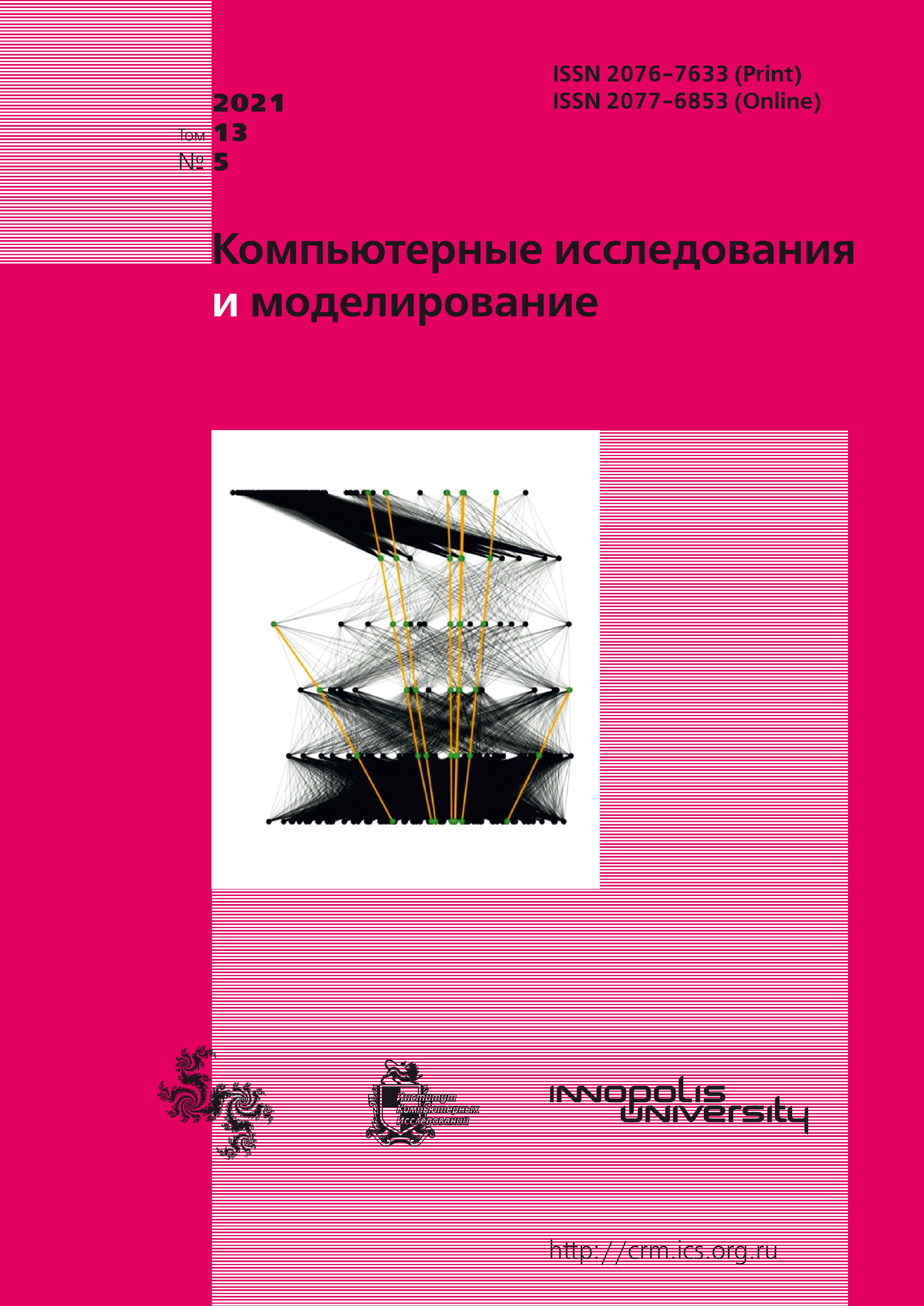All issues
- 2025 Vol. 17
- 2024 Vol. 16
- 2023 Vol. 15
- 2022 Vol. 14
- 2021 Vol. 13
- 2020 Vol. 12
- 2019 Vol. 11
- 2018 Vol. 10
- 2017 Vol. 9
- 2016 Vol. 8
- 2015 Vol. 7
- 2014 Vol. 6
- 2013 Vol. 5
- 2012 Vol. 4
- 2011 Vol. 3
- 2010 Vol. 2
- 2009 Vol. 1
Analysis of the identifiability of the mathematical model of propane pyrolysis
 pdf (378K)
pdf (378K)
The article presents the numerical modeling and study of the kinetic model of propane pyrolysis. The study of the reaction kinetics is a necessary stage in modeling the dynamics of the gas flow in the reactor.
The kinetic model of propane pyrolysis is a nonlinear system of ordinary differential equations of the first order with parameters, the role of which is played by the reaction rate constants. Math modeling of processes is based on the use of the mass conservation law. To solve an initial (forward) problem, implicit methods for solving stiff ordinary differential equation systems are used. The model contains 60 input kinetic parameters and 17 output parameters corresponding to the reaction substances, of which only 9 are observable. In the process of solving the problem of estimating parameters (inverse problem), there is a question of non-uniqueness of the set of parameters that satisfy the experimental data. Therefore, before solving the inverse problem, the possibility of determining the parameters of the model is analyzed (analysis of identifiability).
To analyze identifiability, we use the orthogonal method, which has proven itself well for analyzing models with a large number of parameters. The algorithm is based on the analysis of the sensitivity matrix by the methods of differential and linear algebra, which shows the degree of dependence of the unknown parameters of the models on the given measurements. The analysis of sensitivity and identifiability showed that the parameters of the model are stably determined from a given set of experimental data. The article presents a list of model parameters from most to least identifiable. Taking into account the analysis of the identifiability of the mathematical model, restrictions were introduced on the search for less identifiable parameters when solving the inverse problem.
The inverse problem of estimating the parameters was solved using a genetic algorithm. The article presents the found optimal values of the kinetic parameters. A comparison of the experimental and calculated dependences of the concentrations of propane, main and by-products of the reaction on temperature for different flow rates of the mixture is presented. The conclusion about the adequacy of the constructed mathematical model is made on the basis of the correspondence of the results obtained to physicochemical laws and experimental data.
Copyright © 2021 Safiullina L.F., Gubaydullin I.M.
Indexed in Scopus
Full-text version of the journal is also available on the web site of the scientific electronic library eLIBRARY.RU
The journal is included in the Russian Science Citation Index
The journal is included in the RSCI
International Interdisciplinary Conference "Mathematics. Computing. Education"






